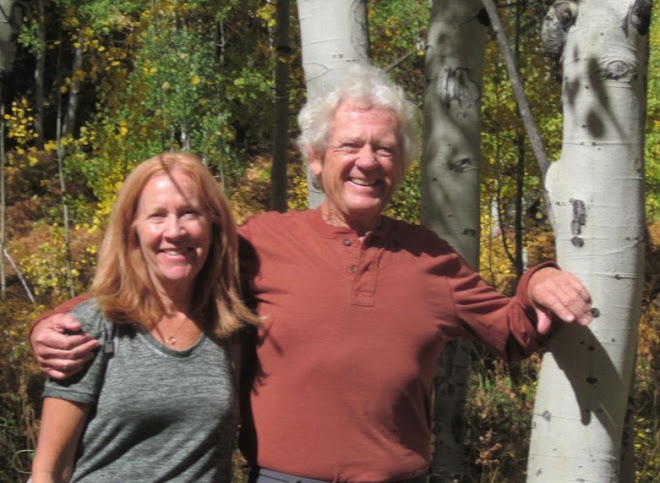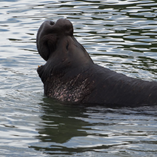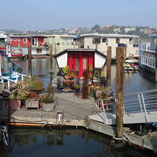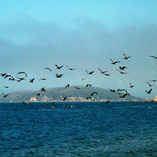Pat and Ron's Travel Adventures

Welcome
Happy Trails!
Saturday, December 26, 2015
Australia
Sunday, December 13, 2015
New Zealand
Click here for all: Photos
Saturday, February 7, 2015
We left our hearts in San Francisco
Most of us have been to San Francisco. For the few of you who have not, this city is a gem. Our stay in California would not be complete without revisiting the sights on the “City by the Bay”. San Francisco is a unique destination that has its own qualities and charm. It is known for its cool summers, coastal fog, and built on seven steep rolling hills. It was the center of liberal politics, the seat of the Beat Generation, the heart of the Hippies counterculture centered at Haight-Ashbury, and heralded the Gay Rights movement. Its landmarks include the famously crooked Lombard Street, the Golden Gate Bridge, cable cars carrying riders up steep inclines, Victorian houses, Chinatown, Alcatraz Island (former prison), Fisherman’s Wharf, the Embarcadero, and Pier 39 with its shops and restaurants. So there is plenty for tourists to see, for the songwriters to write, and for the film producers to stage. Doesn’t everyone remember the famous car chase scene in “Bullitt”, the dizzying scenes on the Golden Gate Bridge from Hitchcock’s “Vertigo”, and the many settings on the “Streets of San Francisco” as a backdrop for movies (“Dirty Harry”) and television shows? Thousands of films have been staged in this picturesque city.
San Francisco (Spanish for "Saint Francis") was founded June 29, 1776 when a fort was established by the Spanish who named it for Saint Francis of Assisi. The location has been very strategic ever since, with the US forts, the Presidio, and as a port of embarkation for the Pacific in WWII.
With sourdough bread in hand (still famous in San Francisco), prospectors raced to this area during the Gold Rush of 1849. With these fortune seekers streaming into the city, lawlessness became common and the Barbary Coast section of town (named by sailors after the North African area of pirates and slave traders) was a haven of criminals, gamblers, pirates, and vigilante justice.
The 1906 earthquake and subsequent fire destroyed three-quarters of the city, left half the residents homeless, and changed the history of the city so that before and after 1906 is still a common descriptor.
We visited many other coastal areas around San Francisco during our winter in Northern California. Monterey made famous by John Steinbeck’s Cannery Row, is a likeable town on the Ocean. The John Steinbeck museum nearby memorializes his literature and life. This section of coast (and much larger from San Francisco to Santa Barbara) is the Monterey Bay National Marine Sanctuary. Monterey Bay has thriving kelp forests which is why the sea lions hang out there. The Monterey Bay Aquarium is world-renowned and one of the main reasons people travel to Monterey. The scenic beauty is definitely another reason. The Pacific Coast Highway (PCH) goes to nearby Carmel-by-the-Sea, which is where Clint Eastwood was Mayor and which started as an artist mecca and still has nearly 100 art galleries to explore. The sunsets and beach are among the best. The PCH goes further south to the Big Sur unspoiled coastline with its jaw-dropping cliffs plummeting into the ocean. The natural beauty here inspired many famous writers and artists. Scenic vistas are a dime a dozen!
Pacific Grove next door to Monterey is one of the places where many of the dwindling numbers of Monarch butterflies winter before their migration back to the Rocky Mountains. It is a popular vacation get-away place less crowded than Monterey.
Silicon Valley was interesting to visit. Googleplex (the Google corporate headquarters) in Palo Alto was a vast complex with brightly-colored bicycles available for the employees to get around campus which had many fun statues. The lobby contains a piano and a projection of current live Google search queries (40,000 queries every second!) Facilities include free laundry rooms, two small swimming pools, multiple sand volleyball courts, and eighteen cafeterias with diverse menus. Interesting to walk around but they were not very welcoming to visitors.
The one-car garage which led to the founding of Hewlett Packard (and was considered to be “the birthplace of Silicon Valley”) is also in Palo Alto. It is now a private property but visible from the street.
Mountain View has a Computer History Museum which sounded dry but was actually fascinating. It educates visitors from the earliest Babbage difference engine (calculator from 1821), code-breaking computers of WWII, and everything up through the newest self-driving cars, which we saw driving around town.
In San Jose is the mysterious Winchester House (of Winchester gun fame.) It is a mansion haunted by Sarah Winchester herself among others. An unfinished farmhouse originally, it was added onto haphazardly to 160 rooms. It contains stairways that lead nowhere and hidden passageways in order to confuse the ghosts. Delightful.
We previously posted a Floating Homes blog from Sausalito. Our stay on a Floating Home was exceptional and we later learned that Otis Redding wrote “Dock of the Bay” while he stayed on a houseboat there in 1967. Sausalito itself is another artist-inspired and now wealthy community.
From there, we visited Muir Woods to walk among the redwood trees; Angel Island (“Ellis Island of the West”) for a hike with gorgeous views of San Francisco & Alcatraz; Tiburon peninsula (Robin William’s home and ferry port to Angel Island), Point Reyes National Seashore (elephant seals, elk, deer); and Marin Headlands for views of the city and of Golden Gate Bridge at increasing higher elevation.
In-between our jaunts to these wonderful destinations, we home-based inland in Sacramento. There we did house/pet sitting which was new for us. It enabled us to have the infrastructure that you all take for granted (WiFi, TV, furniture, kitchens, driveways, garages) and to enjoy pets temporarily with no permanent responsibility. There we enjoyed frequent walks or bike-rides along the American River Trail which goes along the river for 32 miles and bird watching along the Sacramento River portion of the Pacific Flyway. We also prepared and planned for our next adventure and when and to where we will set off again. So stayed tuned and until then Happy Trails.
Friday, January 23, 2015
Sausalito
On the north side of the Golden Gate Bridge in Marin County, Sausalito is a quaint waterfront town, a 30-minute ferry ride (or 10-minute drive) from downtown San Francisco. Surrounding hills dotted with millionaires' houses overlook Richardson’s Bay. Hikers and bikers enjoy the adjacent Marin Headlands portion of the Golden Gate National Recreation Area. Tourists clamber up to Hawk Hill to get that postcard shot of the Golden Gate Bridge with them in the foreground.
Sausalito is one of the west coast's sleepy delights, all the better experienced while staying in one of the over 400 houseboats also known as “floating houses”. This name is more appropriate since there is no steering wheel or propeller. The Sausalito floating home community consists of various shapes, sizes, and values, with styles of decorations and architecture that befits the owner’s personality. The roots of the Houseboat Community lie in the re-use of abandoned boats and material after the de-commissioning of the Marin shipyards at the end of World War II. Following World War II, a lively waterfront community continued to grow out in the 60’s and early 70’s. Art studios, Venice festivals, and summer getaways from the city all added to the popularity growth.
In 1976 Fleetwood Mac stayed close to the old dockyard while recording their “Rumors” album. According to rock'n'roll folklore those recording sessions were drug-fuelled, as was the Sausalito of the 70s, when the houseboat community emerged from the flower-power era. Those who had gone to San Francisco wearing flowers in their hair for art and music had been gatecrashed by the drug drop-out crowd, squatting on vessels, refusing to pay taxes and bringing the community to the brink of eviction.
Thankfully, these days the feel of the early houseboat scene, forged from the 60s ethos of peace, love, understanding and ingenuity, has been sustained. OK, some of the funkiness, far-out art, and shocking personal touches may still exist, but there are also the remodeled, expanded, and designer styles also. The community may have derived from the 70’s counter-culture movement, but today they have well-paid jobs, probably don't take acid, and play with Xbox, not guitars, and they take pride in their expensive homes. But this is a more laidback, quieter, dreamy water-centric alternative to the city dwellers over the bridge.
While not embracing tourists and renters, renting is not excluded. We were very fortunate to find an affordable smaller one that allowed us to experience this lifestyle by participation rather than observation. Included in our rental were two kayaks and two bicycles for our use, which we found to be the typical transportation for this community.
Our living room opens up onto an attached dock area, with access to a floating dock. From this deck we can see many birds on the bay estuary, seagulls and pelicans flying overhead, who prepare to dive for tasty morsels. Harbors seals, playfully swimming around navigating the currents, occasionally disappear into a dive only to resurface, alert and looking right at us and then to dive again – for hours on end. Sunrises and sunsets provided a special show reflecting the colorful shadows of the nearby sailing boats and moorings off the water. Throughout the night, the effects of the tides going in and out could be felt as our floating house bumped against its mooring and strained against its rope restraints as through it preferred to be going out to sea.
All in all, this has been truly a unique experience and one that we will cherish and remember fondly.
Monday, January 19, 2015
Point Reyes National Seashore
Point Reyes is a National Seashore on the western coast of California, just north of San Francisco. It is a peninsula of land on the Pacific Plate and separated from the mainland (which is on the North American Plate) by the San Andreas Fault. The peninsula has moved northward 350 miles (so far) by these two plates rubbing against each other. Drakes Bay and Tomales Bay are inlets formed by the peninsula. With marshes (oyster farming and shorebirds), coastline (elephant seals and sea lions), pasturelands (historic ranches and farming), the Pacific Flyway (nearly 490 species of birds), the fault line (the land shifted 21 feet during the 1906 earthquake), and hills (deer, Tule elk, hawks), there is always plenty of hiking and exploring activities to do and unique sights to see. As a result, it is one of our favorite places and we return here whenever we are near.
The Spanish explorer Sebastian Vizcaino named the land Punto de los Reyes ("Kings' Point") when his ship, the Capitana anchored in Drakes Bay on the Day of the Three Kings (Epiphany or the end of the 12 Days of Christmas) on January 6, 1603.
Point Reyes' first inhabitants, the Coast Miwok, lived on the land for thousands of years. They left evidence of well over a hundred encampments on the peninsula, with a population estimated to have been nearly 3,000. As seasonal hunters and gatherers rather than cultivators, they were nourished by fish, clams, mussels, and crab, in addition to the deer, elk, bear, mud hen, geese, and small game they hunted with spears and bows. Sir Francis Drake's 1579 anchorage at Point Reyes was near a Coast Miwok settlement.
Two large mammalian species, the Northern Elephant Seal and the Tule Elk were nearly hunted to extinction. In 1978, ten Tule Elk were re-introduced to Point Reyes and have now grown to over 500. While slightly smaller than the Roosevelt Elk and Rocky Mountain Elk, they are, nonetheless, a special treat to see.
The Elephant Seals, with their protruding noses and trumpeting, bellowing sounds, managed to survive and have recovered to the present population of 1,500 to 2,000 individuals. They return each winter to mate and raise their young below Point Reyes' Chimney Rock. Alfred Hitchcock’s “The Birds” was shot nearby and John Carpenter’s movie “The Fog” was shot at the Point Reyes’s Lighthouse and the small, nearby town of Inverness, where we stayed this year. This attests to the coastal climate often encountered there and to the number of birds seen.
















































